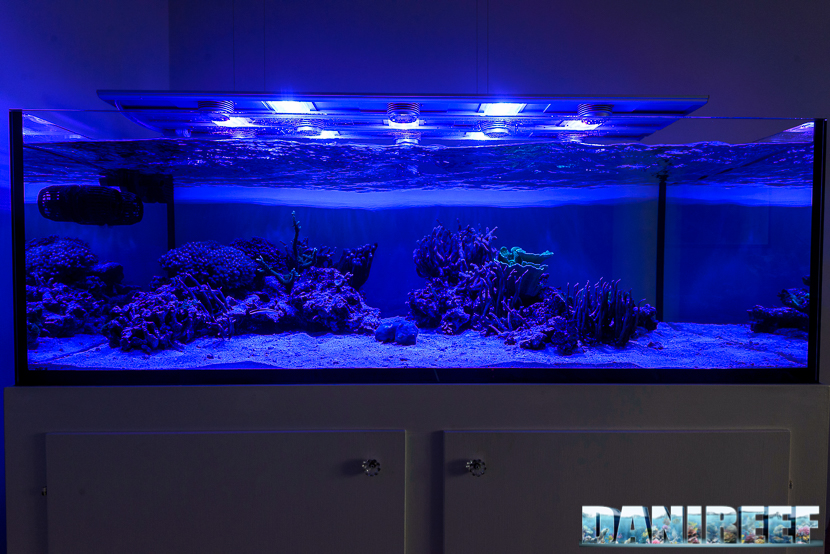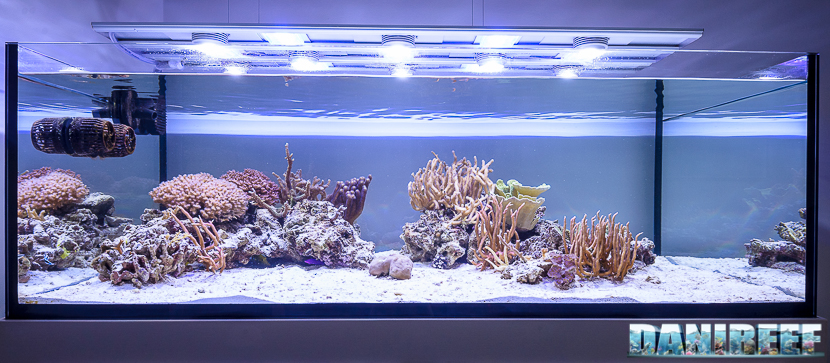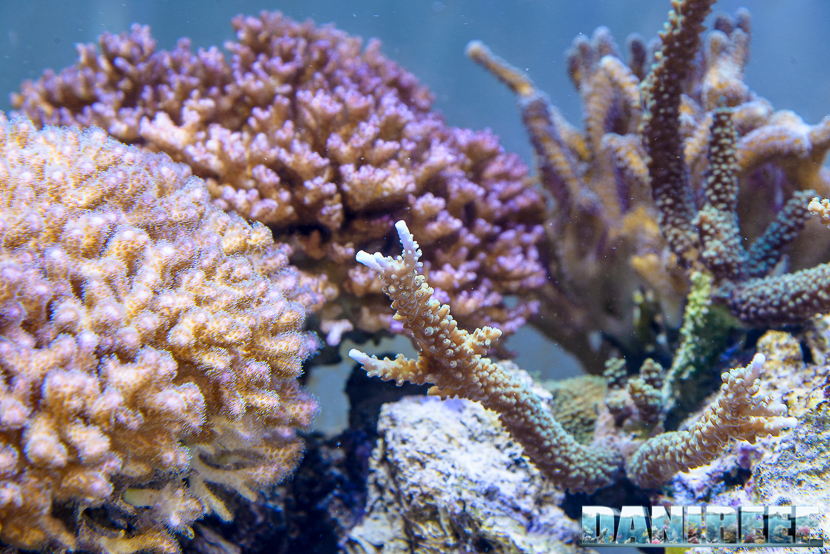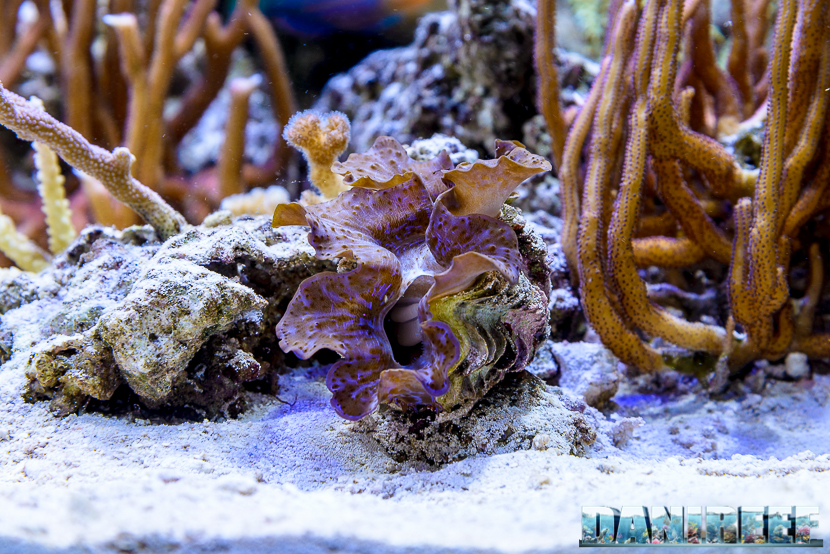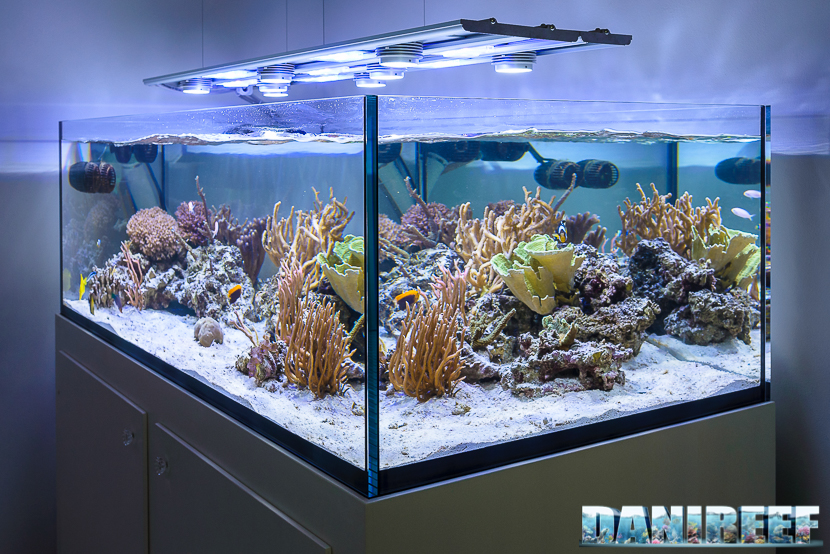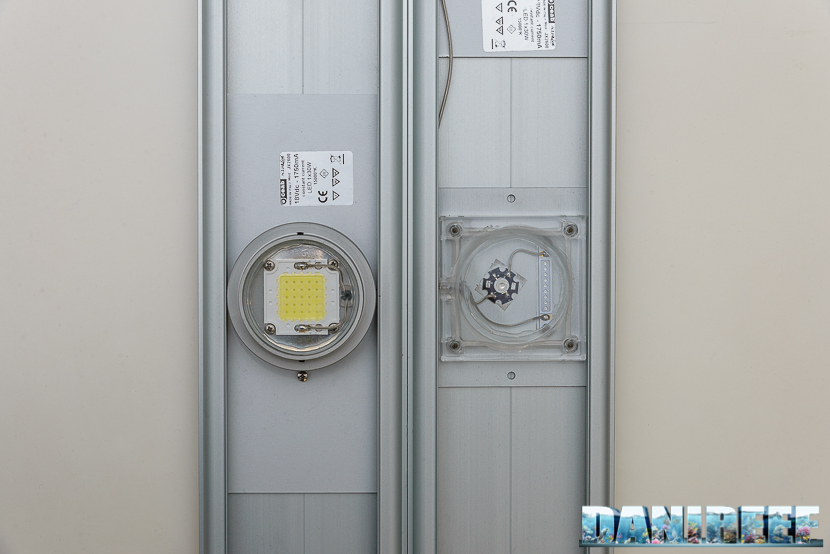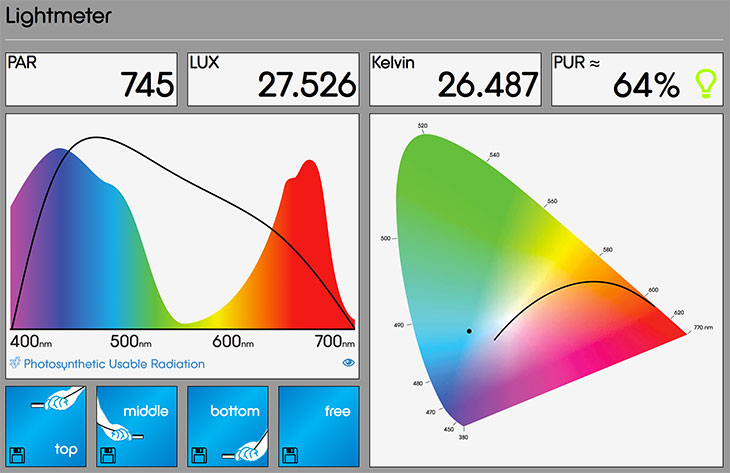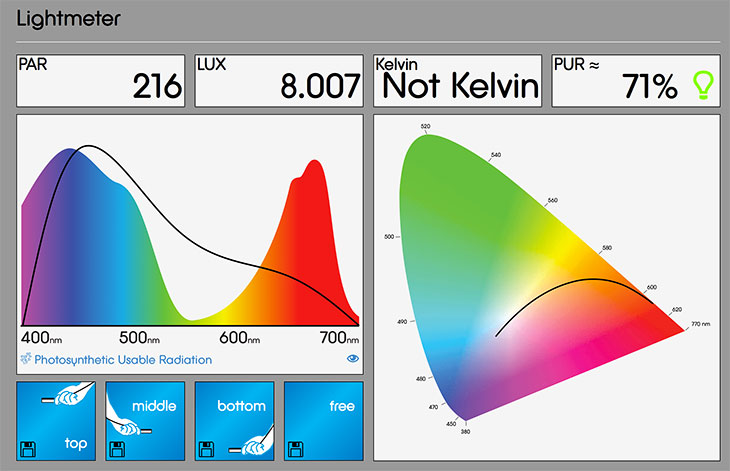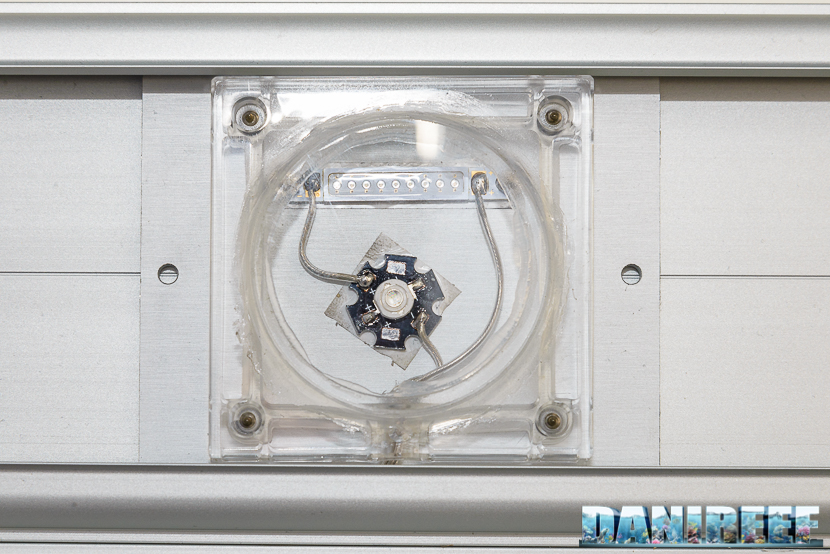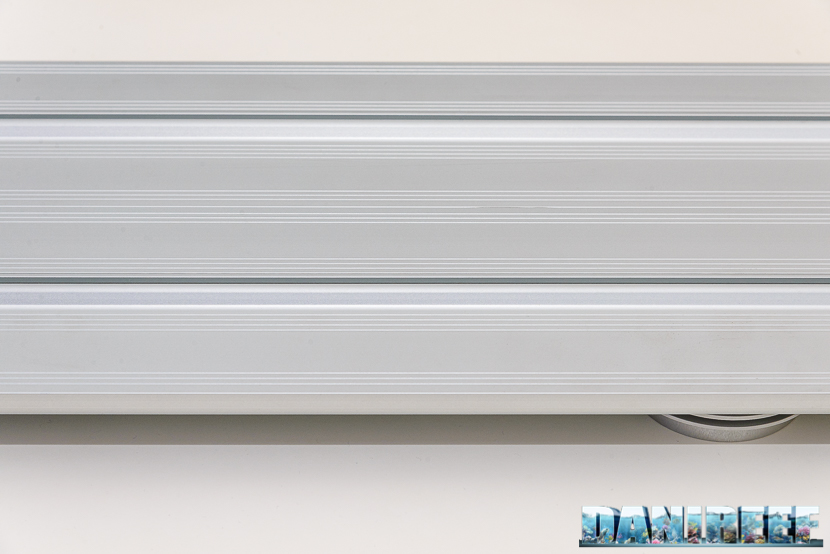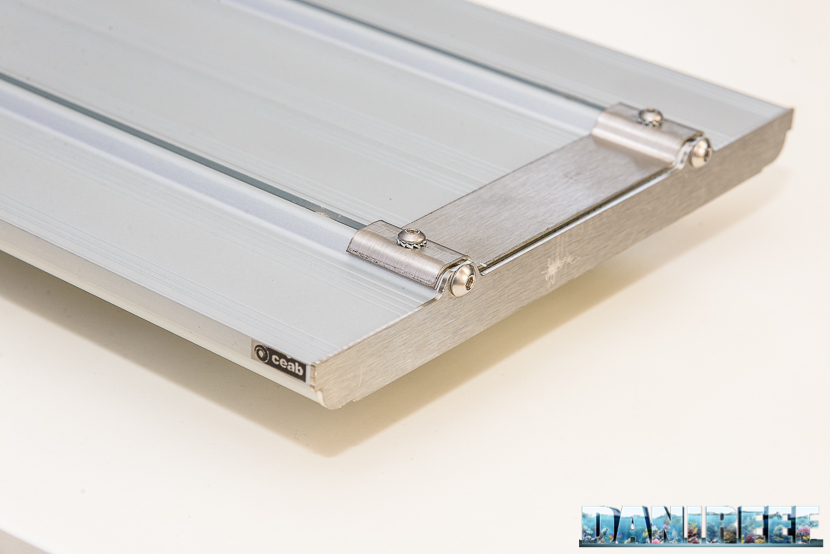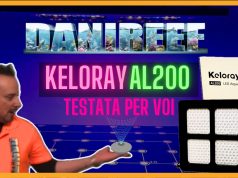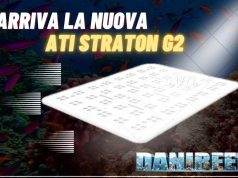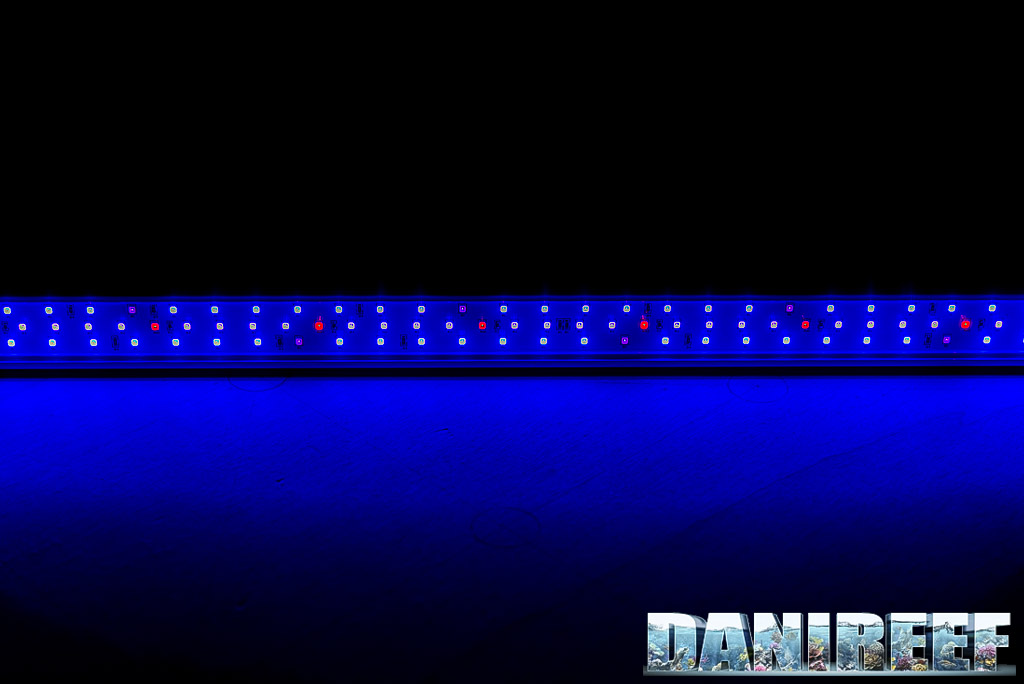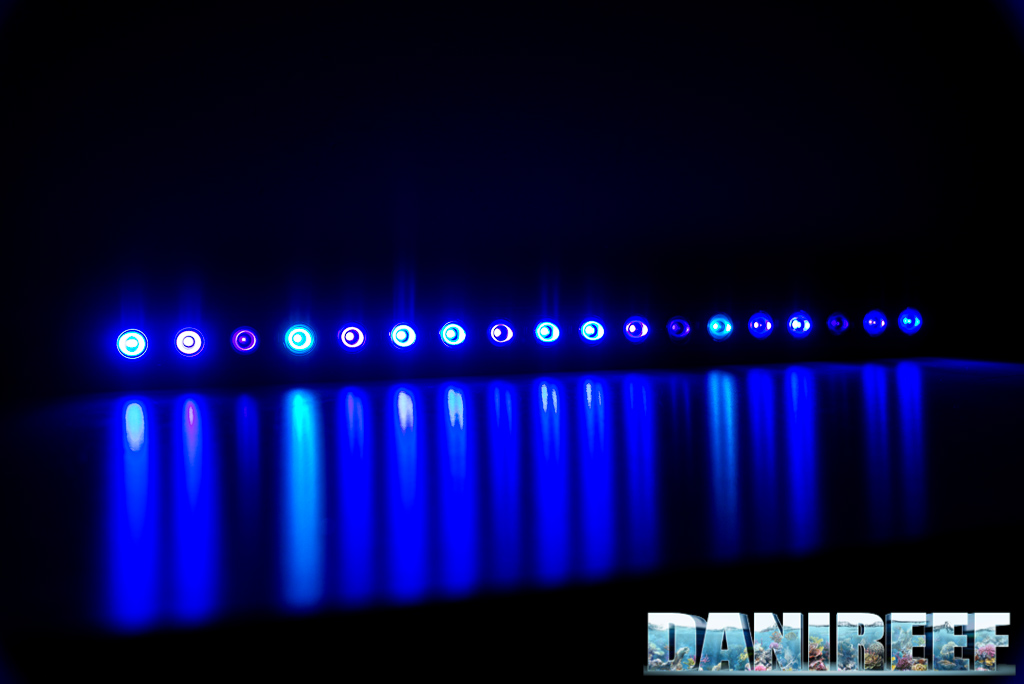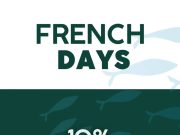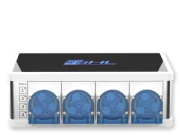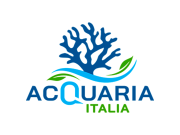Our Impressions
Before this trial the tank was lighted by HQi lamps, but the transition to led lights has been completely painless. We didn’t have any losses.
To minimize any potential problems we started with the light at 40 cm distance from the tank, lowering it of 5 cm every week. Using it this way we observed some darkening of the animals.
Unfortunately after 3 months our SPS corals were still darker than normal, so we contacted CEAB who kindly sent us a third slide module with 3 more 30 watt superleds and two blue ones.
From here the tank performance considerably improved especially from an aesthetic point of view, but in the 6 months trial our corals remained fairly dark and their growth slowed down, even with all water parameters in range, low nitrates and good values of calcium, magnesium and KH.
None of the animals has suffered, they only got darker and slowed down their growth. But here we are talking about needy SPS corals, they are much more demanding than many other corals which wouldn’t have had any problems at all with this light.
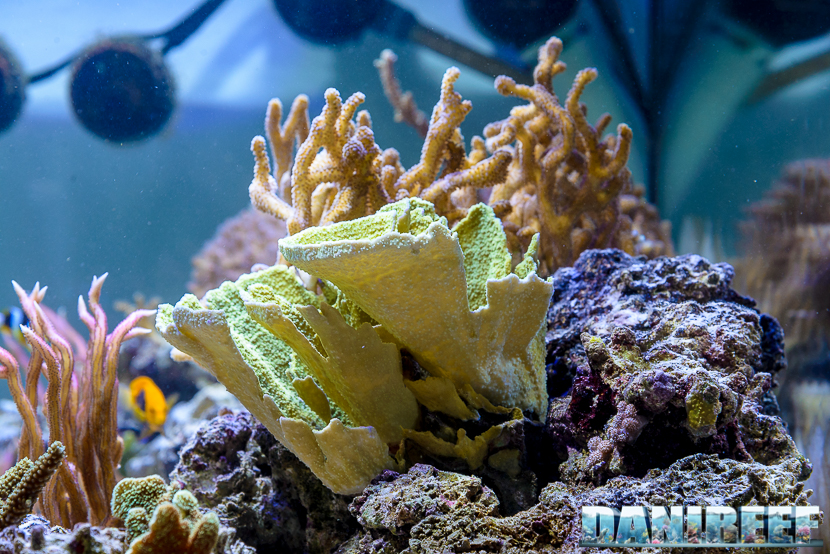 Above: green Montipora foliosa
Above: green Montipora foliosa
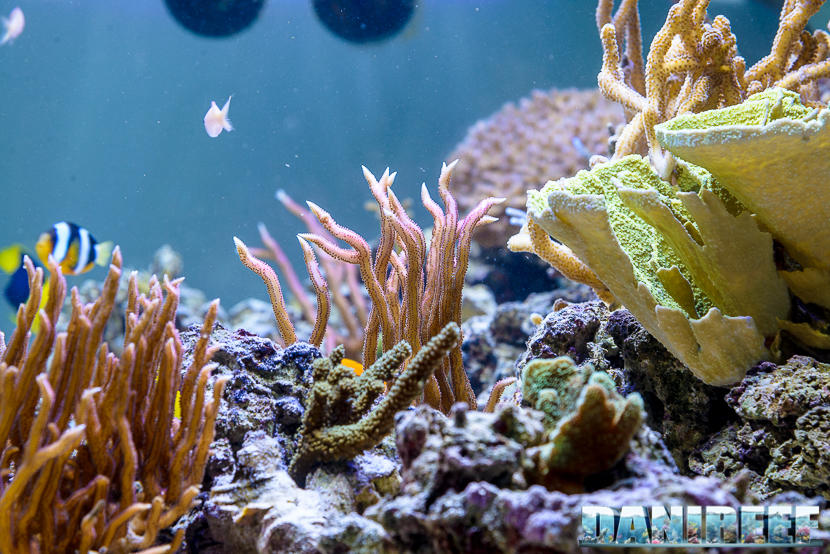 Above: Seriatopora histrix, in good health with growing tips, a slightly darker coloration than usual.
Above: Seriatopora histrix, in good health with growing tips, a slightly darker coloration than usual.
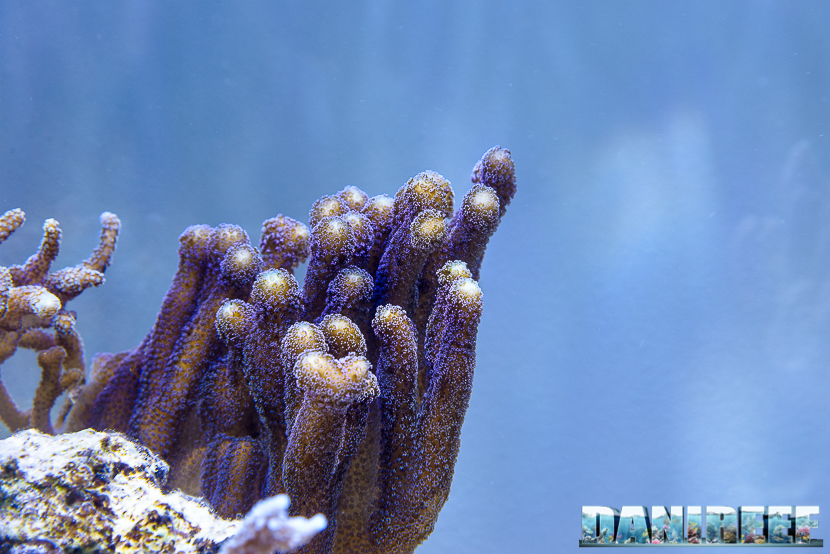 Above: a well growing Stylophora pistillata milka, also with a fairly dark coloration.
Above: a well growing Stylophora pistillata milka, also with a fairly dark coloration.
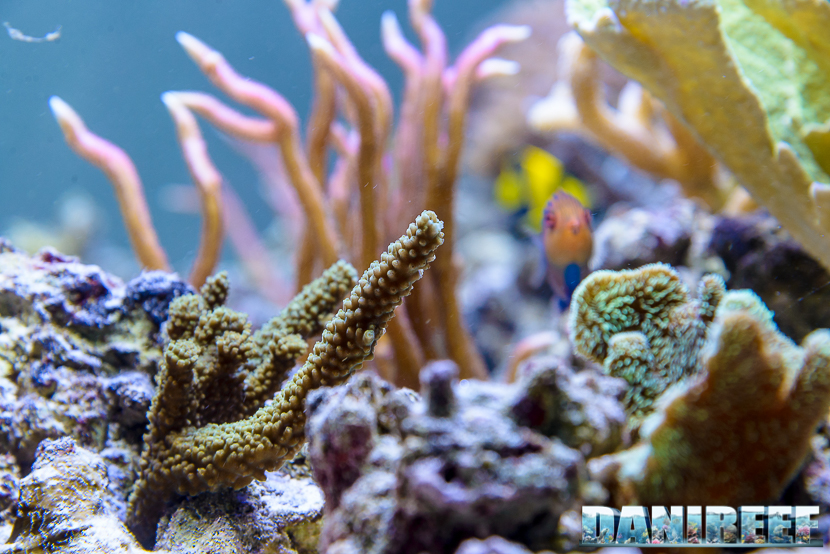 An Acropora nobilis is struggling to grow near the tank bottom, with only the higher brunch showing sign of growth.
An Acropora nobilis is struggling to grow near the tank bottom, with only the higher brunch showing sign of growth.
Another Acropora positioned at medium depth in the middle of the tank has a better growth rate and is starting to gain a lighter coloration on the upper brunches.
Behind, a Seriatopora caliendrum and Pocillopora show poor colours but good general health conditions with protruding polyps.
The Tridacna maxima on the tank bottom looks like it’s enjoying this light, with the mantle protruding from its shell sign that it’s not bothered but that it would probably be even happier with a bit more
To sum up our experience we can say that the SPS growth has been slowered, keeping an acceptable level only on the tank upper layer. Corals coloration has lost its sparkle and turned to darker shades.
Performance & Measurements
It’s difficult to measure a light’s performance, we don’t really have the right instruments to do it and even if we did it would still be hard to know what to measure exactly. To deepen your theoretical knowledge I suggest you read this article: The Light in nature, comparisons with the lighting in our aquariums.
The first instrument I used was the Seneye Reef probe which recently improved its software with an update that measures PUR in addition to PAR in the luxmeter section.
I took two measurements, the first was taken at 20 cm under the 30 watt led, with all leds on at maximum power: here I noticed that the majority of the light power came from the single “superled“.
Underneath the leds cluster, as you can see from the graph:
- PAR: 745
- Lux: 27.526
- PUR: 64%
I then took a second measurment to get a measure of the whole light power, further from the cluster:
Here I found:
- PAR: 216
- Lux: 8.007
- PUR: 71%
I also used the Elos Biotopus II brightness probe and found the following value:
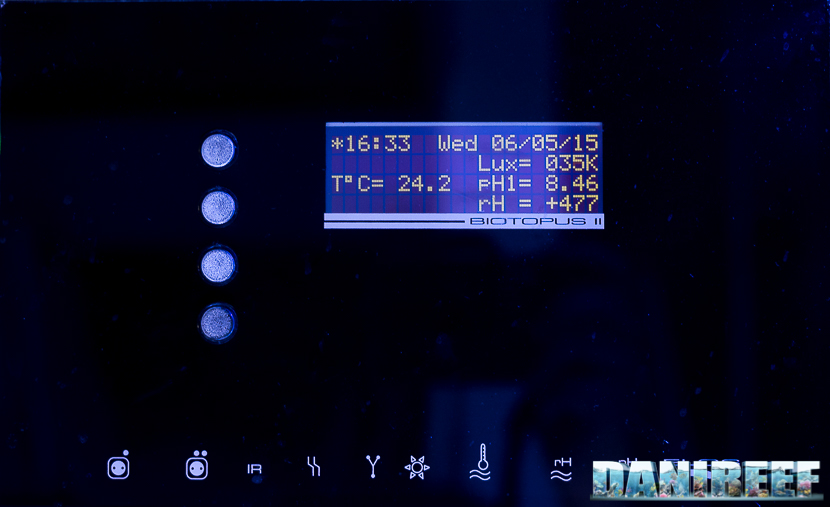 |
|
| Underneath led cluster, 20 cm distance Lux: 35.000 |
It is difficult to interpret these values alone, even because the probe seems to need calibration, but they can be useful for comparison with other lights in the absence of a well working instrument which I hope to find soon.
Comparing the values with those taken before we can see the following:
| Lights | Underneath Led Cluster |
% | Cluster Side |
% |
| Hqi Elos 250 watt with Elos Spectra | 60.000 | 100 % | 71.000 | 100 % |
| Sicce GNC AM 466* | 45.000 | 75 % | 18.000 | 25 % |
| Ecotech Marine Radion xr30w G2 | 58.000 | 97 % | 42.000 (middle) | 59 % |
| Ecotech Marine Radion xr30w G2 PRO | 61.000 | 102 % | 44.000 (middle) | 62 % |
| CEAB Slide&Led | 35.000 | 58 % | n.a. |
I think it’s better to compare the values underneath a led cluster or in the middle of the lihht depending on the light brand, but I still like to look at values on the side out of curiosity. The probe structure didn’t allow us to intercept the angled light waves of the Slide&Led, but it would have been useless to take measurements where there wasn’t a white superled and in this light there were 8.
The Slide&Led brightness under cluster is lower than the 250 watt HQi as we could easily predict by comparing 30 watt with 250, and even comparing the best performing leds we would not expect to fill the gap. On the contrary, the value is amazing as it can easily be compared to a 150 watt HQi. Basically, in a tank like the one we had for this trial, it’s just like if the tank was turning from 2×250 watt to a 8×150 watt with a much better spread of light.
Maintenance Costs
The most common doubt about Led lighting system compared to more traditional systems (HQi, Neon) is regarding their initial price and maintenance costs.
A system like the one we used, based on 3 Slide&Led modules, should cost you around 2700 €.
The power consumption is stated at 300 watt, so 9€/watt. To have a general idea we can compare it again to other systems already mentioned: the Elos E-Power 250 watt, now out of production, had 3,2 €/watt consumption while Sicce GNC AM 466 a much higher price of 13,3 €/watt. Radion were between 4,64 and 4,93 €/watt depending on which radion.
We should still consider that during the use of led lighting systems the costs are constant, we never need to buy replacements bulbs or anything else. We are talking about products that should last beyond 10 years, while any HQi or T5 would need several replacements of bulbs or neon tubes.
Considering the 6 separate switches we used the following scheme for lighting the tank:
- 2 blue led – 10 watt – 12 hours per day – total: 120 watt
- 2 blue led 1 UV led – 15 watt – 11 hours per day – 165 watt
- 2 blue led – 10 watt – 10 hours – 100 watt
- 2 white led – 60 watt – 9 hours – 540 watt
- 2 white led – 60 watt – 8 hours – 480 watt
- 3 white led – 90 watt – 7 hours – 720 watt
for a total daily consumption of 2125 watt. This means a yearly consumption of 776 kwh which based on the price of 0,26€/watt equals 202 €. This translates to 16,80€/month, a very good deal.
Price Comparison
CEAB Slide&Led 300 watt:
- Buying price: 2.700 €
- Yearly cost for 12 hours lighting/day: 776 kwh*0.26 = 202 euros.
- 5 years: 3.710 € or 742 €/year
- 10 years: 4.720 € or 472 €/year
3 x Ecotech Marine Radion G2 PRO:
- Buying price: 2.390 €
- Yearly cost for 11 hours lighting/day: 931 kwh*0.26 = 256 € (based on the lighting curve I used)
- 5 years: 3.670 euro or 734 €/year
- 10 years: 4.950 euro or 495 €/year
3 x Ecotech Marine Radion G2:
- Buying price: 2.090 euro
- Yearly cost for 11 hours lighting/day: 711 kwh*0.26 = 185 € (based on the lighting curve I used).
- 5 years: 3.015 € or 630 €/year
- 10 years: 3.941 € or 394 €/year
2x Sicce GNC AM466:
- Buying price: 3.200 euro
- Yearly cost for 10 hours lighting/day: 876 kwh*0.26 = 228 €
- 5 years: 4.340 € or 868 €/year
- 10 years: 5.480 € or 548 €/year
1x HQi Elos EPower 2×250 ed Elite Blu:
- Buying price: 1.800 €
- Yearly cost for 10 hours lighting/day: 2062 kwh*0.26 = 536 €
- Average cost of bulb replacing, based on replacement every 9 months: 228 €
- 5 years: 5.620 € or 1140 €/year
- 10 years 9.440 € or 944 €/year
1x ATI Powermodule con 8 tubi da 54 watt:
- Costo di acquisto: 800 €
- Yearly cost for 10 hours lighting/day: 1577 kwh*0.26 = 410 €
- Average cost of neon tubes replacing, based on replacement every 7 months: 17*8/7*12 = 233 €
- 5 years: 4.015 € or 803 €/year
- 10 years: 7.230 € or 723 €/year
Let’s sum everything up in a table:
| Light | Buying price | Yearly consumption | Replacement costs | Yearly price over 5 years | Yearly price over 10 years |
| CEAB Slide&Led | 2.700 € | 202 € | 3.710 € | 4.720 € | |
| n.3 Radion XR30w G2 PRO | 2.390 € | 256 € | 3.670 € | 4.950 € | |
| n.3 Radion XR30w | 2.090 € | 358 € | 3.880 € | 5.670 € | |
| n.2 Sicce GNC AM 466 | 3.200 € | 228 € | 4.340 € | 5.480 € | |
| ATI Powermodule 8×54 | 800 € | 410 € | 233 € | 4.015 € | 7.230 € |
| Elos EPower 2×250 + Elite | 1.800 € | 536 € | 228 € | 5.620 € | 9.440 € |
We can see the the costs per year are very similar for all led lights.
The table does not take into consideration the heathing and cooling costs.
For example: Jonathan’s tank temperature is kept low during winter in order to have a smaller impact on his energy bill, so, during winter, there is no much difference in total consumption with HQi or Led. During summer, on the other hand, using a chiller you will notice a big difference in total consumption.
The amount of energy saved by using led is very remarkable:
if you use HQi lamps you will need a very powerful chiller, while if you have a led light like CEAB Slide&Led you can save a lot of money by buying a much smaller chiller and using it together with cooling fans.






